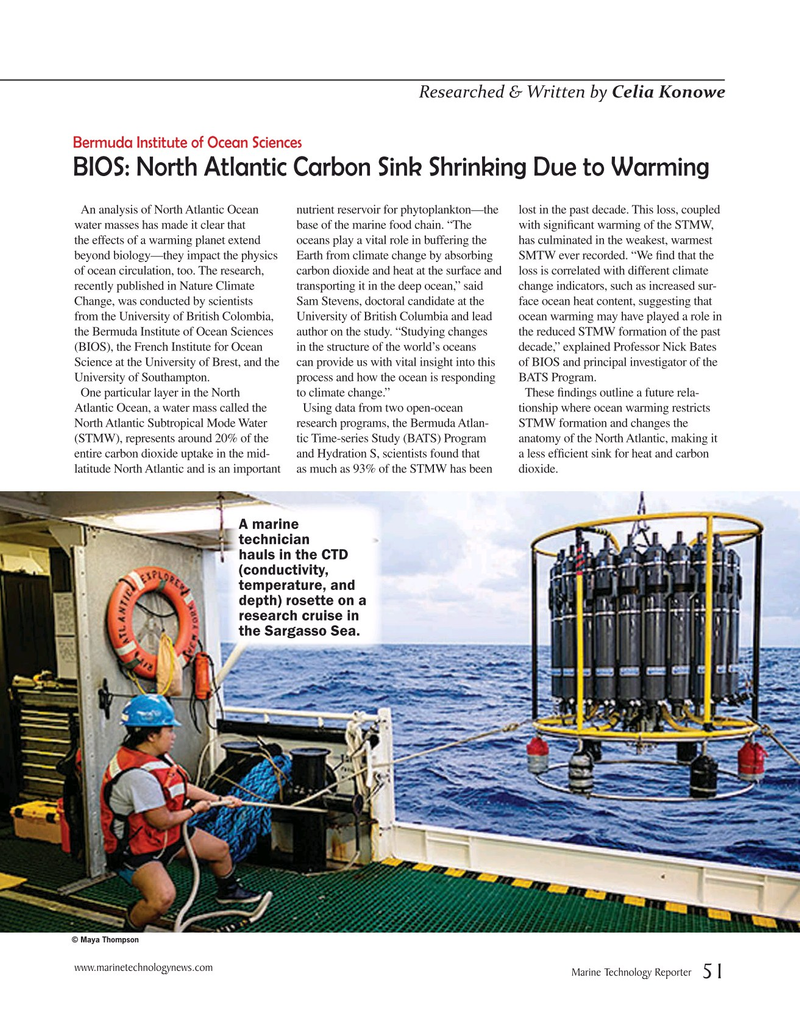
Page 51: of Marine Technology Magazine (June 2020)
Read this page in Pdf, Flash or Html5 edition of June 2020 Marine Technology Magazine
Researched & Written by Celia Konowe
Bermuda Institute of Ocean Sciences
BIOS: North Atlantic Carbon Sink Shrinking Due to Warming
An analysis of North Atlantic Ocean nutrient reservoir for phytoplankton—the lost in the past decade. This loss, coupled water masses has made it clear that base of the marine food chain. “The with signifcant warming of the STMW, the effects of a warming planet extend oceans play a vital role in buffering the has culminated in the weakest, warmest beyond biology—they impact the physics Earth from climate change by absorbing SMTW ever recorded. “We fnd that the of ocean circulation, too. The research, carbon dioxide and heat at the surface and loss is correlated with different climate recently published in Nature Climate transporting it in the deep ocean,” said change indicators, such as increased sur-
Change, was conducted by scientists Sam Stevens, doctoral candidate at the face ocean heat content, suggesting that from the University of British Colombia, University of British Columbia and lead ocean warming may have played a role in the Bermuda Institute of Ocean Sciences author on the study. “Studying changes the reduced STMW formation of the past (BIOS), the French Institute for Ocean in the structure of the world’s oceans decade,” explained Professor Nick Bates
Science at the University of Brest, and the can provide us with vital insight into this of BIOS and principal investigator of the
University of Southampton. process and how the ocean is responding BATS Program.
One particular layer in the North to climate change.” These fndings outline a future rela-
Atlantic Ocean, a water mass called the Using data from two open-ocean tionship where ocean warming restricts
North Atlantic Subtropical Mode Water research programs, the Bermuda Atlan- STMW formation and changes the (STMW), represents around 20% of the tic Time-series Study (BATS) Program anatomy of the North Atlantic, making it entire carbon dioxide uptake in the mid- and Hydration S, scientists found that a less effcient sink for heat and carbon latitude North Atlantic and is an important as much as 93% of the STMW has been dioxide.
A marine technician hauls in the CTD (conductivity, temperature, and depth) rosette on a research cruise in the Sargasso Sea. © Maya Thompson www.marinetechnologynews.com
Marine Technology Reporter 51

 50
50

 52
52
